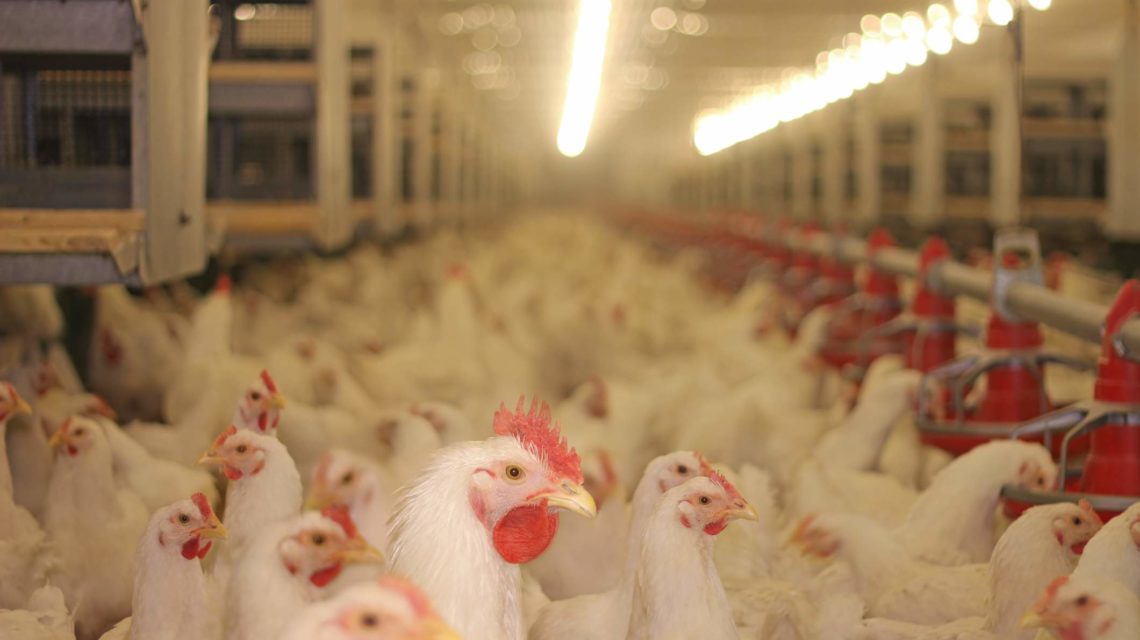
Don’t Let Bad Air Quality Come Home to Roost
Eggs are high in nutritional value and are the primary ingredient in a number of easily prepared meals. They are also plentiful and economical. Most of the eggs we consume come from hens in laying houses. Modern technology has made this a rapid and efficient process. Laying hens are kept in cages arranged in rows of a large room. As the eggs are produced; they travel along a conveyor belt to where they are collected for cleaning, grading, and distribution.
Great care goes into maintaining a well-ordered laying house. Temperature is maintained at 55 degrees Fahrenheit to 79 degrees, and residual humidity above 50%. This keeps the hens comfortable and when they are comfortable; they lay eggs. However, there is one thing that seems to get overlooked in modern egg production; Air Quality. Not a small factor either. Chickens have bacterial diseases that cause illness just like humans do, and chicken feces is loaded with ammonia which can be emitted into the local environment causing problems for neighbors and inviting government sanction. Airocide can eliminate both issues while saving time and money for egg farmers.
Respiratory illness in hens is a big problem. An entire flock can die very quickly if an epidemic strikes the laying house. Disease can also be passed on to the eggs; making them unmarketable. Diseases are highly contagious, and in an enclosed area will propagate rapidly. Furthermore, the carrier bird can almost never be identified. So, it is critical that laying houses have a good Bio-defense strategy. One that includes NASA PCO Industrial Air Sanitizers. In the coming paragraphs; Let’s explore diseases that Airocide can help prevent.
Infectious Bronchitis Virus (IBV) is a highly contagious disease with well-known economic consequences. Morbidity rates are close to 100%. It infects laying houses all over the world. It is characterized by respiratory symptoms and decreased egg production. It is a coronavirus that enters mucous and feces and is spread by aerosol. The testing of viral reduction (in air) is difficult, costly, and not always universally accepted. However, we are privileged to have a study conducted in a dairy production facility that conclusively showed reduction in Bacteriophage.
Infectious Coryza is caused by the gram-negative bacterium Haemophilus paragallinarum which can live for as long as three days outside of the bird. That is a long time to travel in the air, and why this disease can spread so easily. It also has a high morbidity rate, which creates severe economic consequences for the farmer. The bacterium is spread when mucous discharge is aerosolized. In the Texas A&M Medical Center study; Airocide reduced gram-negative bacteria counts by 100%. It could have a similarly dramatic impact in laying houses.
Infectious Laryngotracheitis (ILT) is an acute respiratory disease. It is caused by a herpes virus and has a morbidity rate that can run as high as 70%. Even when properly treated; the virus will lie dormant in birds for the remainder of their life. The virus is spread through mucous propagation, and subsequent aerosolizing. Again, virus detection in air is an uncertain science. but the Dairy study will be valuable in propositioning Airocide as a solution.
Aspergillosis is a fungal disease which is commonly found in chickens. It is spread through airborne transmission from existing colonies, which can form in litter materials. It propagates rapidly in high humidity environments. It is not treatable, and has morbidity rates as high as 50%. Once a bird is infected; it will remain infected even if it does not immediately show symptoms. In our child care facility study, Airocide reduced fungal colonies by a third.
Marek’s Disease is a type of avian cancer. Tumors, that develop in nerves cause lameness and paralysis. Tumors can also occur in the eyes causing blindness. This usually occurs in chickens 12 to 25 weeks of age. It is spread through the propagation of Marek’s Virus in air. Airocide can reduce transmission rates by disturbing the protein capsid of the virion in the inert stage of the virus – while it is suspended in the air. Once again, the Dairy Study shows this.
Infectious Bursal Disease (IBD) causes a sudden decrease in water and feed consumption. Watery droppings lead to soiling of the vent, which causes vent pecking. Many chickens can survive the disease, but will become severely and permanently immunosuppressed. It is also a viral disease that spreads when droppings become aerosolized. Airocide can prevent this, and the Dairy Study demonstrates this.
The final air quality issue is ammonia. Chicken droppings are full of it, and it causes severe odor issues. Ammonia levels can rise to a point that this becomes a problem for others in the area. Most governments regulate ammonia transmissions as it can lead to ocular and skin problems. This is also a problem for workers and managers of the laying house as well as the chickens themselves. It has been documented that increased ammonia levels lead to decreased egg production. So, it is wise for farmers to control it. The Photocatalytic Oxidation process has been shown to oxidize the ammonia molecule (NH3) to NH2. This can prove extremely helpful in maintaining a good environment for animals and all stakeholders.
The average population of chickens in a laying house presently stands at 75,000, and regulations in both the United States and European Union dictate that the cage in which the hen is kept should be 5,896 cubic centimeters. This means that the cage space would be at minimum 20,000 cubic feet (estimated). However, given the nature of airborne pathogens and high load of ammonia; we strongly recommend using a rigorous spec which consists of several Airocide HD/TITAN units. In closing, Airocide filterless air purification units will dramatically improve the air quality and keep egg farmers focused on happy hens and happier profits.

